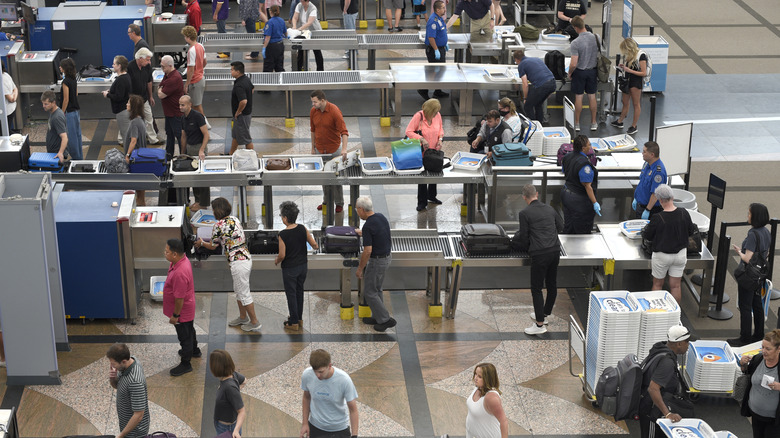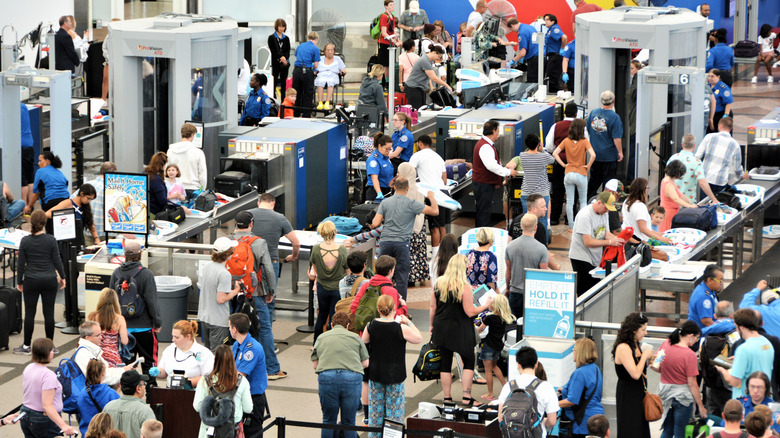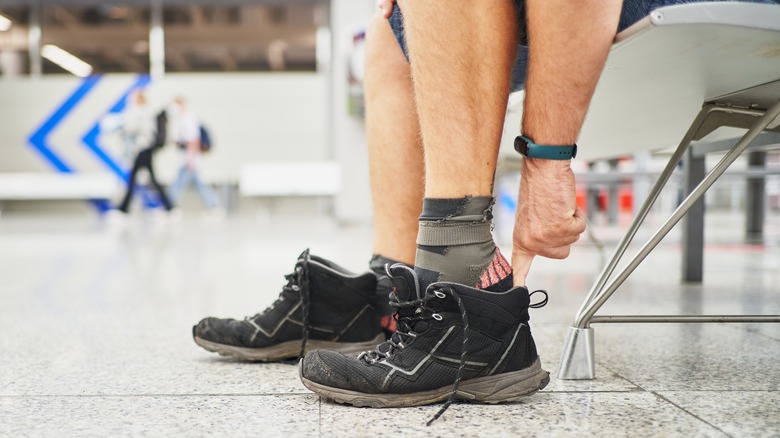How To Strategically Choose The Fastest TSA Security Line
Unless you've entered the glorious universe of TSA Precheck, Global Entry, Clear, or another airport line-cutting method, then you're still at the whims of people, flights, time, standing, de-belting, de-laptopping, and shoe removing. In other words, you're still standing in TSA security lines (like most of us common folk).
While patience is indeed a virtue, it's easy to lose steam in TSA lines — especially if you're already running late at the airport. When on time, flight departures are notoriously impatient, so the angst-building pace of a long TSA line can break even the most stoic-minded of travelers. We have nothing against the idea or practice of airport security, nor the typically agreeable agents who help ensure airport security, but missing your flight is a problem.
Although we're not behavioral psychologists or airport sociologists, our TSA line-standing experience has helped inform a few theories on how to pick the fastest-moving TSA line. To the untrained eye, these theories may seem trivial. To the trained and data-driven eye, even more so. Nonetheless, here are two ways to strategically choose the fastest TSA line.
Discern short lines vs. fast lines
When you start your preliminary scan, you'll be tempted to choose the shortest line. If by "shortest" you mean only two or three people, then go for it. You won. But, if the shortest line is still 15 people or so deep, then you may want to dig a bit deeper. There's no quick-and-fast rule here, and we don't want to overgeneralize, but if that shorter line includes eight children, two seemingly exasperated parents, and a group of senior explorers, then you may want to re-evaluate. That shorter line may take a while.
Still scanning, is there a longer line comprised of couples, solo travelers with their laptops already tucked under their arms, and businesspersons with seemingly expensive, hard-cased luggage? If so, bingo. That line will glide. Also, while shorter lines are tempting, they may be short for a reason. Other savvy travelers may have already jumped ship due to bottlenecks outside your purview as a newcomer. Unless you see something to the contrary, sometimes it's okay to believe the airport's hive mind.
Cut line-standing time by moving outward
While a short line may indicate a bait-and-switch time trap, there's one exception to short lines worth exploring (other than the line just being super short). Check out the extreme-outer security checkpoints. Casual, new, or "time-on-my-side" flyers tend to simply stand in the line of least resistance. In other words, these travelers may not consider the far right or far left scanners. Someone was in front of them, so they stood behind them, etc.
If the outer lines are short, then venture out to grab a spot. These are, most likely, genuinely short lines. In some instances, it's hard not to notice the line-length bell curve of TSA security lines. The middle TSA lines tend to stay long, while line lengths gradually taper down as you move outward. This isn't a data-backed scientific observation, either. As mentioned, we aren't behavioral scientists — just frequent flyers.


